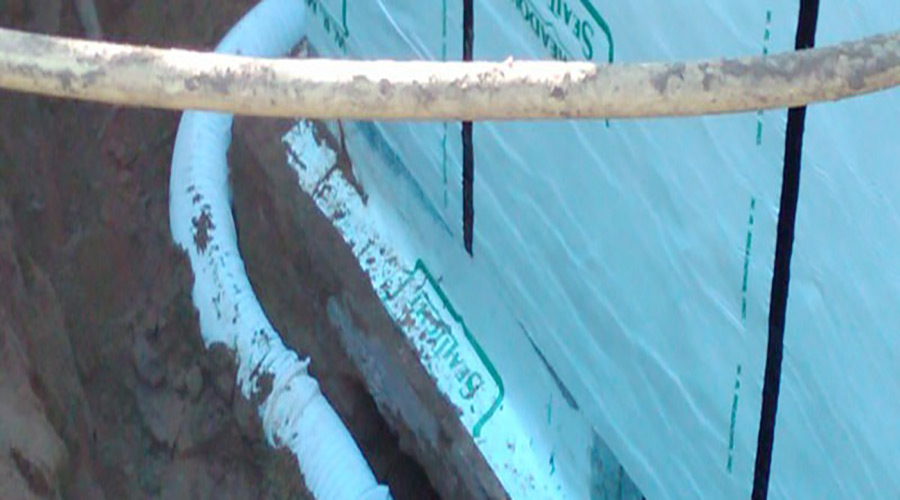Repair Your Weeping Tile System with High-Pressure Flushing

Over time, your home’s weeping tile system can become clogged with sediments, soil and more.
However, having a clogged weeping tile system does not always mean that you need a replacement! High-pressure flushing provides an effective, more cost-efficient alternative.
The Importance of a Properly Functioning Weeping Tile System
Ensuring that your basement stays dry relies on your home’s weeping tile system. A weeping tile system acts as a drainage system that’s installed at the base of a foundation wall. Groundwater that accumulates along the building’s footing builds up pressure (known as hydrostatic pressure). Your weeping tile system’s purpose is to drain water away from your home before any moisture problems occur.
Identifying when Your Weeping Tile System Needs Attention
Sometimes, blockages in the form of clay, sediment, minerals and soil can build up throughout your weeping tile system. Wondering if this is the case at your home? Check for the following signs below:
- Inspect your basement or crawlspace for foundation wall cracks
- Check for leaks in your basement or crawlspace
- Pay attention to unusual odours – ie. musty or damp smells
- Look for mould or mildew on joists, walls and flooring; note stained or peeling drywall, panelling or paint and lifted flooring
- Check for water pooling around your home’s foundation and inside your window wells
- Ensure your sump pit is filling with water; if you notice basement moisture and the pit’s not filling, it’s a sign
The best way to know if you have a weeping tile system problem is to have a professional inspection completed.
How High-Pressure Flushing Works
If your weeping tile system does have a blockage, high-pressure flushing may be the drain tile cleaning solution!
Also known as weeping tile jetting, high-pressure flushing is a great alternative to replacing your entire weeping tile system. Here’s how it works:
First, an evaluation will be completed by foundation experts to determine the best way to reach the weeping tile system.
Your home’s age plays a big factor in determining the method needed. If your home was made before 1973, you probably have a clay pipe weeping tile system featuring an elbow-shaped pipe on each corner. Sometimes, these corners require excavation.
If your home is newer, feeding the high-pressure line around the corners is much easier. The line is fed around the entire perimeter of your home so that every section of the weeping tile system can be accessed.
A line is then inserted into the weeping tile, and high-pressure water is jetted through the lines at 3000 psi. Whether the debris is clay, sediment, soil or minerals, the high-pressure flushes it out of the weeping tile and back towards the technician.
Disconnect Downspouts
Older homes in Hamilton and Burlington may have their downspouts connected to their sewer system. Before running into the sewer lines, the downspout drainage from your roof might run through your weeping tile first. Because downspouts collect rainwater, it is believed that your weeping tile has a higher chance of clogging as anything that falls on your roof, such as leaves, loose grit from your shingles and dirt will make their way into your weeping tile.
If your downspouts run into the sewer system, the current recommendation is to disconnect any downspouts in your Hamilton or Burlington home from your sewer lines and divert the water away from your home.
Both Hamilton and Burlington both offer downspout subsidies (grants).
Hamilton Downspout Disconnection Subsidy
Halton Downspout Disconnection Program
Experts in High-Pressure Flushing
When you have a problem with your weeping tile system, don’t wait for it to turn into a bigger issue. At the first sign of damage, call a foundation professional.
Since 1993, Conterra Foundation and Repair Ltd. has been providing homeowners in Hamilton, Burlington and the surrounding area with high-pressure flushing services.
For more information on weeping tile cleaning and a free estimate, contact us directly.